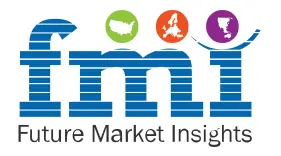AI-Driven Predictive Analytics for Packaging Demand Forecasting
Future Market Insights whitepaper, titled “AI-Driven Predictive Analytics for Packaging Demand Forecasting”, is a comprehensive thought leadership paper exploring how artificial intelligence (AI) is revolutionizing the global packaging industry by bringing accuracy, efficiency, and sustainability to the forefront of operational strategy.
Spanning across packaging verticals like food & beverage, pharmaceuticals, e-commerce, and personal care, the report outlines the growing role of predictive analytics in transforming every aspect of packaging from material sourcing to design, inventory, and machinery maintenance up to 2035.
At its core, the whitepaper outlines a critical transformation: packaging is no longer just a logistics function but a data-driven, intelligent system. AI has moved from experimentation to operational necessity. The AI in packaging market is forecast to grow from USD 1.1 billion in 2025 to USD 6.3 billion by 2035, with predictive analytics leading the charge.
Key Highlights from the Report Include:
- Forecasting & Planning: AI and machine learning tools are enabling demand prediction with up to 95% accuracy by 2035, minimizing overstock, shortages, and waste. This is critical as SKU complexity and packaging demand continue to rise globally.
- Material Optimization: AI models enhance raw material forecasting, reducing procurement cost overruns by up to 22% and enabling sustainable choices. The share of bio-based and paperboard packaging is projected to rise from 42% in 2025 to 64% by 2035.
- Inventory Efficiency: AI-based systems can cut excess inventory and stockouts significantly71% of inventory is optimized post-AI implementation versus 43% without it freeing up working capital and increasing responsiveness.
- Seasonal & E-commerce Readiness: Predictive analytics is helping brands pre-empt packaging surges during events like holidays or flu seasons. Forecasting error rates across sectors like retail and pharma are projected to drop below 15% by 2030.
- Generative AI & Design Innovation: AI is now generating packaging concepts in under 48 hours, reducing time-to-market by up to 50% and increasing consumer engagement with trend-aware, personalized designs.
- Smart & Sustainable Packaging: Intelligent packaging with real-time freshness monitoring is reducing spoilage, particularly in dairy, meat, and seafood. Smart packaging adoption is expected to rise from 14% in 2025 to 65% in 2035.
- Maintenance & Automation: Predictive maintenance powered by AI is reducing machine downtime and costs, extending equipment lifespan by up to 30%. AI-integrated ERP systems are streamlining end-to-end workflows.
- Sustainability Alignment: AI is guiding material choices that cut carbon emissions from 2.9B tons in 2025 to 1.8B by 2035. Sustainable materials like recycled and compostable formats will account for over 60% of packaging by 2035.
- Investment Trends: Global AI investment in packaging is projected to reach USD 6.9 billion by 2030, with 39% focused on predictive analytics. Generative AI, automation, and sustainability tools make up the rest.
- Implementation Challenges: Despite rapid growth, barriers like poor data quality, integration complexity, workforce skill gaps, and regulatory uncertainty remain critical challenges to address.
This whitepaper positions AI not as a tech upgrade, but as a central force driving the packaging industry's next phase of innovation, efficiency, and sustainability. Companies that integrate predictive intelligence across ERP, design, production, and supply chain functions will be the ones that lead in resilience, profitability, and environmental responsibility.
AI in packaging is no longer optional. It is foundational.
